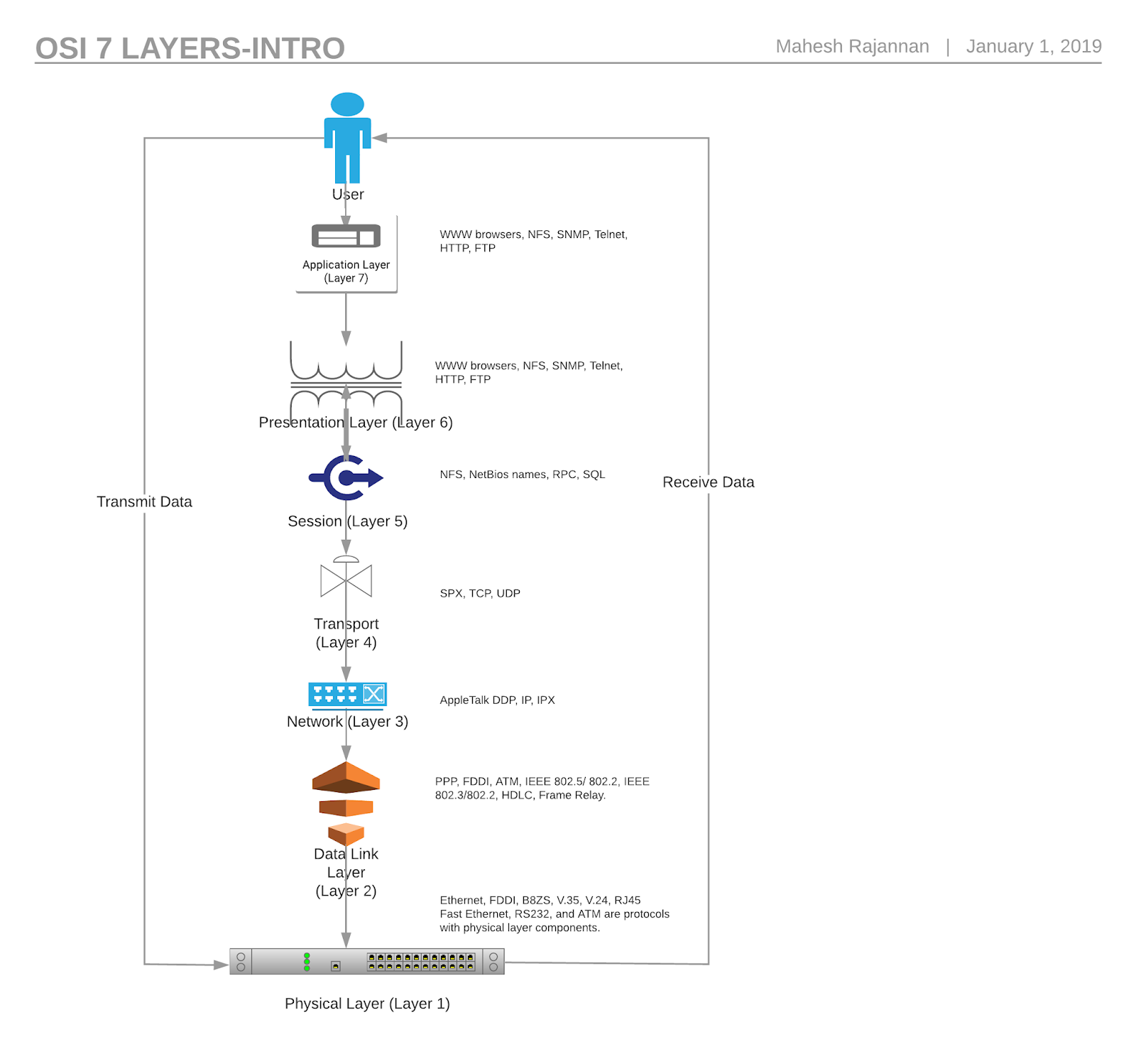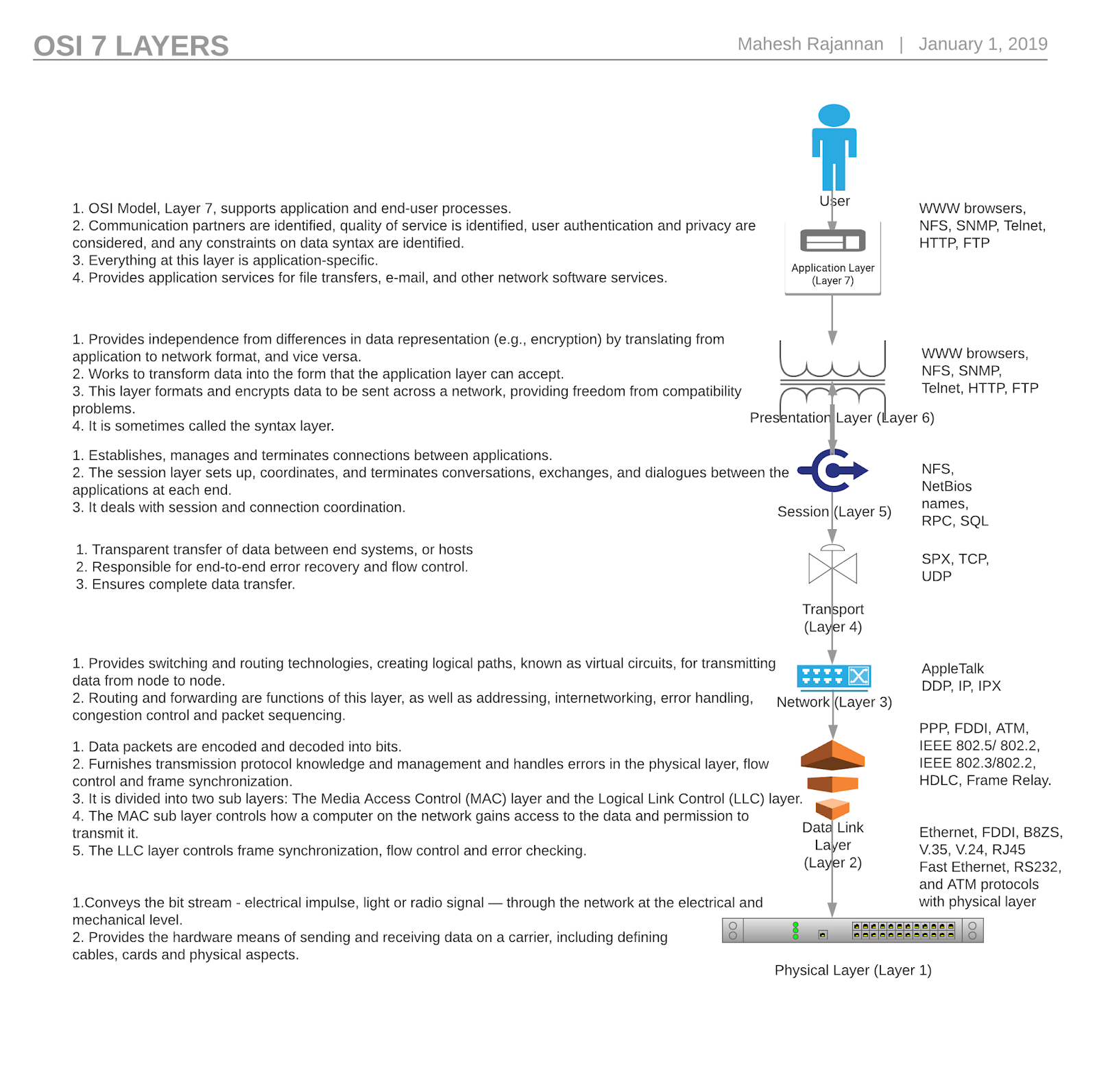OSI Model Intro

OSI Model Intro. This is discussed so that, 1. Node's non blocking IO model can be fully understood. 2. Node's middleware concept can be explained. INTRO: 1. In the OSI model, control is passed from one layer to the next, starting at the application layer (Layer 7) in one station, and proceeding to the bottom layer, over the channel to the next station and back up the hierarchy. 2. The OSI model takes the task of inter-networking and divides that up into what is referred to as a vertical stack that consists of the following 7 layers. References Used: 1. https://www.webopedia.com/quick_ref/OSI_Layers.asp#OSI-7 2. https://en.wikipedia.org/wiki/OSI_model <--Previous Next-->
